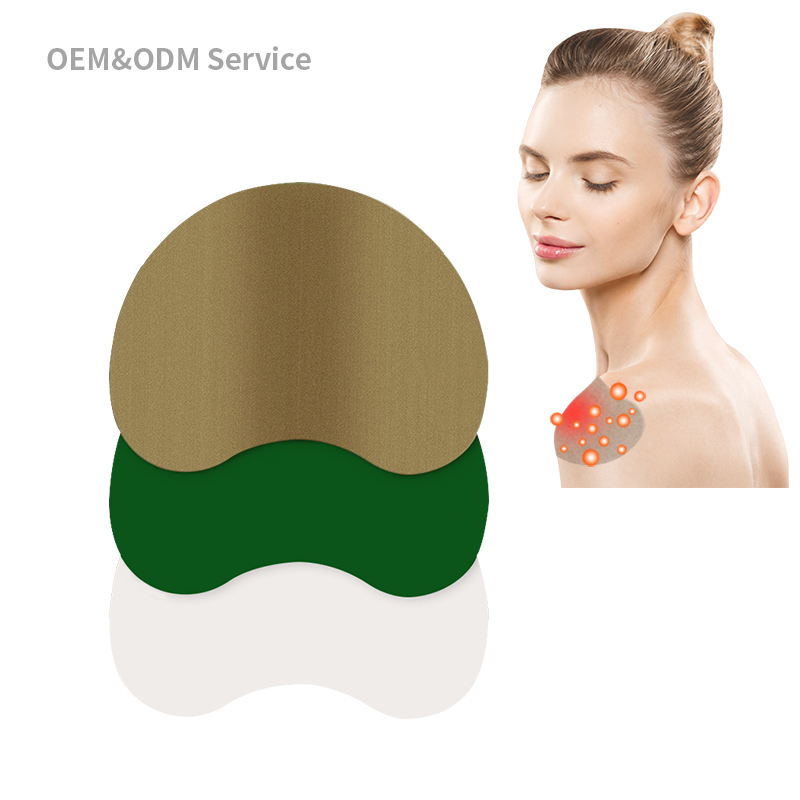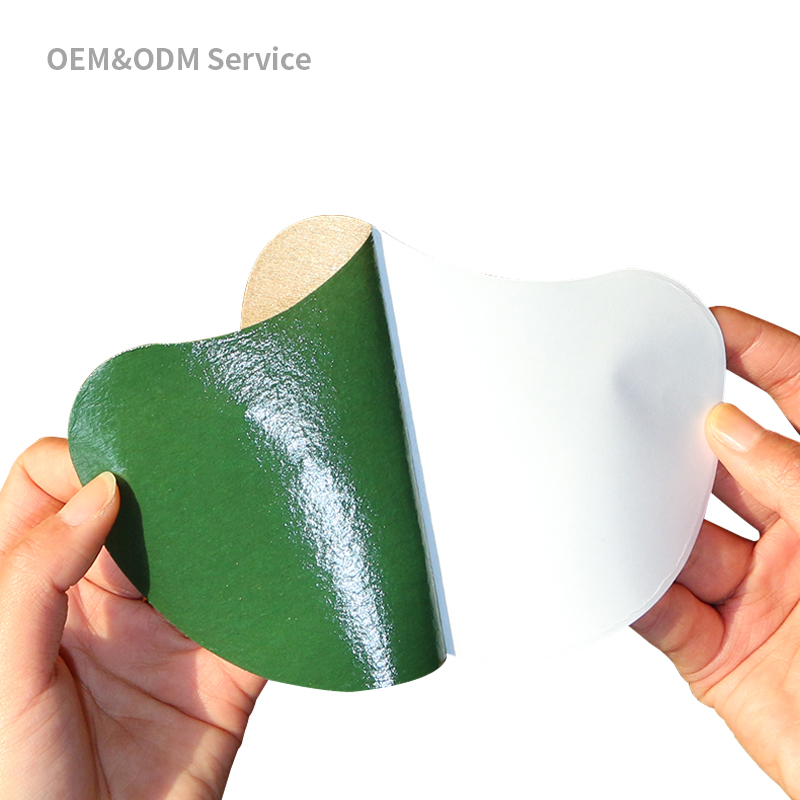The Benefits of Partnering with a Shoulder Pain Patches OEM Supplier
In the competitive landscape of the health and wellness industry, businesses must find innovative ways to differentiate themselves. One effective strategy is partnering with a reputable Shoulder Pain Patches OEM supplier. This collaboration can provide numerous advantages, from product quality to market differentiation. In this article, we'll explore the benefits of partnering with a Shoulder Pain Patches manufacturer, the value of custom and private label options, and how such partnerships can help your business thrive.

Understanding Shoulder Pain Patches
Shoulder pain is a prevalent issue, affecting millions globally due to various conditions such as muscle strains, arthritis, and injuries. Shoulder pain patches offer a convenient and effective solution, delivering therapeutic ingredients directly to the affected area through transdermal technology. As the demand for non-invasive pain relief options increases, shoulder pain patches represent a significant market opportunity.
Key Benefits of Partnering with a Shoulder Pain Patches OEM Supplier
1. Expertise and Innovation
Partnering with a seasoned Shoulder Pain Patches manufacturer gives you access to extensive industry expertise and innovative technology. These manufacturers have the necessary knowledge and experience to develop high-quality products that meet current market demands. They stay abreast of the latest trends and advancements in pain relief, ensuring that your products are cutting-edge and effective.
2. Customization Opportunities
A major advantage of working with a Shoulder Pain Patches OEM is the ability to customize your products. Custom Shoulder Pain Patches can be tailored to meet specific customer needs, whether through unique formulations, sizes, shapes, or packaging. This customization allows your brand to stand out by offering personalized solutions that resonate with your target audience.
3. Private Label Solutions
Private Label Shoulder Pain Patches enable you to market high-quality products under your own brand name. This strategy enhances brand recognition and fosters customer loyalty. A reliable Shoulder Pain Patches supplier will provide comprehensive private label services, from product development to packaging and labeling, allowing you to focus on marketing and distribution while ensuring product consistency and quality.
4. Cost-Effective Production
Outsourcing production to a Shoulder Pain Patches OEM is often more cost-effective than establishing your own manufacturing facilities. OEMs benefit from economies of scale, which reduces production costs and offers competitive pricing. This cost efficiency allows you to allocate resources to other critical business areas, such as marketing and customer engagement.
5. Regulatory Compliance and Quality Assurance
Regulatory compliance and quality assurance are critical in the health and wellness industry. Partnering with a reputable Shoulder Pain Patches supplier ensures that your products meet all relevant regulations and standards. These manufacturers adhere to stringent quality control processes and conduct rigorous testing to guarantee product safety and efficacy. This commitment to quality builds consumer trust and mitigates the risk of product recalls or legal issues.
How to Choose the Right Shoulder Pain Patches OEM Supplier
Selecting the right OEM partner is crucial for the success of your shoulder pain patch product. Here are key factors to consider:
1. Experience and Reputation
Choose a manufacturer with a proven track record in producing shoulder pain patches. Research their industry reputation, customer reviews, and testimonials. An experienced manufacturer will be well-equipped to navigate challenges and deliver high-quality products.
2. Customization Capabilities
Ensure that the OEM offers extensive customization options. They should be able to accommodate specific requirements, whether it's formulation adjustments, unique packaging designs, or branding elements. The ability to create Custom Shoulder Pain Patches will distinguish your product from generic alternatives.
3. Quality Assurance and Compliance
Verify that the manufacturer follows strict quality assurance protocols and complies with relevant regulations. Inquire about their quality control processes, testing methods, and certifications. A commitment to quality is non-negotiable in the health and wellness sector.
4. Communication and Support
Effective communication and support are vital for a successful partnership. Choose an OEM that is responsive, transparent, and willing to collaborate closely with your team. This ensures that your vision is accurately translated into the final product.
5. Scalability and Flexibility
Consider your long-term growth plans when selecting an OEM. Ensure they have the capacity to scale production as your business expands. Additionally, they should be flexible enough to accommodate changes in product specifications or market demands.
Frequently Asked Questions (FAQs)
1. What are the key ingredients in shoulder pain patches?
Shoulder pain patches typically contain analgesic and anti-inflammatory ingredients such as menthol, camphor, capsaicin, and nonsteroidal anti-inflammatory drugs (NSAIDs). These ingredients help alleviate pain and reduce inflammation.
2. How do shoulder pain patches work?
Shoulder pain patches deliver therapeutic ingredients through the skin directly to the affected area. This transdermal delivery method ensures targeted pain relief and reduces systemic side effects compared to oral medications.
3. Can I customize the ingredients in my private label shoulder pain patches?
Yes, partnering with a Shoulder Pain Patches OEM allows you to customize the formulation of your patches. You can select specific ingredients based on your target audience's needs and preferences.
4. What are the packaging options for custom shoulder pain patches?
Custom shoulder pain patches can be packaged in various formats, including individual sachets, multi-patch boxes, and resealable pouches. Packaging can be tailored to reflect your brand's identity and provide convenience for consumers.
5. How long does it take to develop and launch a private label shoulder pain patch?
The development timeline for a private label shoulder pain patch varies depending on the complexity of the customization and regulatory requirements. Typically, it can take several months from initial formulation to final product launch.
Conclusion
Partnering with a reputable Shoulder Pain Patches OEM supplier offers numerous advantages for businesses aiming to enter or expand in the pain relief market. From accessing industry expertise and innovation to benefiting from cost-effective production and stringent quality assurance, OEM services provide a strategic pathway to success. Leveraging customization and private label opportunities enables you to create unique products that resonate with consumers and stand out in a competitive landscape. Careful selection of an OEM partner will ensure that your shoulder pain patches meet the highest standards of quality and efficacy, fostering brand loyalty and business growth.
Related Questions
What are the benefits of using shoulder pain patches over oral painkillers?Shoulder pain patches provide localized pain relief, reducing the risk of systemic side effects associated with oral painkillers.
Are there any side effects of using shoulder pain patches?Common side effects may include skin irritation or allergic reactions. It's essential to choose patches with high-quality, skin-friendly ingredients to minimize these risks.
Can shoulder pain patches be used for other types of pain?While specifically designed for shoulder pain, these patches can often be used on other areas of the body, such as the back or knees, to relieve localized pain.
How should shoulder pain patches be stored?Shoulder pain patches should be stored in a cool, dry place away from direct sunlight to maintain their efficacy.
What is the typical duration of pain relief provided by shoulder pain patches?The duration of pain relief varies by product but generally ranges from a few hours to an entire day, depending on the formulation and ingredients used.






